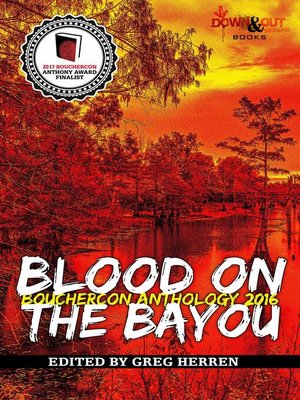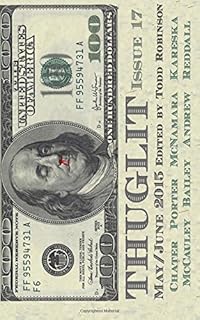Poor Aristotle. According
to Dorothy L Sayers, he was born at the wrong time, forced to make do
with the likes of Sophocles and Euripides while truly craving, as she
puts it, "a Good Detective Story." In "Aristotle on Detective Fiction," a
1935 Oxford lecture, Sayers takes a look at the philosopher's
definition of tragedy in the
Poetics and decides it fits the modern detective story nicely. If Aristotle had been able to get a copy of
Trent's Last Case, maybe he would have skipped all those performances of
Oedipus Tyrannus and
The Trojan Women.
It
doesn't do, of course, to challenge Dorothy Sayers on the nature of the
detective story. But her lecture seems more than a little tongue in
cheek, and her attempt to equate the detective story with tragedy falls
short. At its heart, the detective story is more comic than tragic. And
I'm willing to bet Sayers knew it.
She begins her
lecture by identifying similarities between detective stories and
tragedies. Aristotle says action is primary in tragedies, and that's
true of detective stories, too. Keeping a straight face, not
acknowledging she's made a tiny change in the original, Sayers quotes
the
Poetics: "The first essential, the life and soul, so to
speak, of the detective story, is the Plot." Aristotle says tragic plots
must center on "serious" actions. That's another easy matchup, for
"murder," as Sayers observes, "is an action of a tolerably serious
nature." According to Aristotle, the action of a tragedy must be
"complete in itself," it must avoid the improbable and the coincidental,
and its "necessary parts" consist of Reversal of Fortune, Discovery,
and Suffering. Sayers has no trouble proving good detective stories
adhere to all these principles.
When
she comes to Aristotle's discussion of Character, however, Sayers has
to stretch things a bit. Referring to perhaps the most familiar passage
in the
Poetics, Sayers cites Aristotle's contention that the
central figure in a tragedy should be, as she puts it, "an intermediate
kind of person--a decent man with a bad kink in him." Writers of
detective stories, Sayers says, agree: "For the more the villain
resembles an ordinary man, the more shall we feel pity and horror at his
crime and the greater will be our surprise at his detection."
True
enough. The problem is that when Aristotle calls for a character
brought low not by "vice or depravity" but by "some error or frailty,"
he's not describing the villain. To use phrases most of us probably
learned in high school, he's describing the "tragic hero" who has a
"tragic flaw." So the hero of a tragedy is like the villain of a
mystery--hardly proof that tragedy and mystery are essentially the same.
This
discrepancy points to the central problem with Sayers's argument, a
problem of which she was undoubtedly aware. The principal Reversal of
Fortune in a tragedy is from prosperity to adversity--but that's just
the first half of a detective story. To find a complete model for the
plot of the detective story, we must look not to tragedy but to comedy.
(Please note, by the way, that Sayers was talking specifically about
detective stories, not about mysteries in general. So am I. Thrillers,
noir stories, and other varieties of mysteries may not be comic in the
least--including some literary mysteries that borrow a few elements of
the detective story but really focus on proving life is wretched and
pointless, not on solving a crime.)
Unfortunately,
Aristotle doesn't provide a full definition of comedy. Scholars say he
did write a treatise on comedy, but it was lost over the centuries. The
everyday definition of comedy as "something funny" won't cut it. The
Divine Comedy
isn't a lot of laughs, but who would dare to say Dante mistitled his
masterpiece? Turning again to high-school formulas, we can say the
essential characteristic of comedy is the happy ending. As the standard
shorthand definition has it, tragedies end with funerals, comedies with
weddings.
For a more extended definition of comedy, we can look to Northrup Frye's now-classic
Anatomy of Criticism
(1957). Comedy, Frye says, typically has a three-part structure: It
begins with order, dissolves into disorder, and ends with order
restored, often at a higher level. Simultaneously, comedy moves "from
illusion to reality." Using a comparison that seems especially apt for
detective stories, Frye says the action in comedy "is not unlike the
action of a lawsuit, in which plaintiff and defendant construct
different versions of the same situation, one finally being judged as
real and the other as illusory." Along the way, complications arise, but
they get resolved through "scenes of discovery and reconciliation."
Often, toward the end, comedies include what Frye terms a "point of
ritual death," a moment when the protagonist faces terrible danger. But
then, "by a twist in the plot," the comic spirit triumphs. Following a
"ritual of expulsion which gets rid of some irreconcilable character,"
things get better for everyone else.
How well does the
detective story fit this comic pattern? Pretty darn well. (Frye himself
mentions "the amateur detective of modern fiction" as one variation of a
classic comic character.) The detective story usually starts with
order, or apparent order--the deceptively harmonious English village,
the superficially happy family, the workplace where everyone seems to
get along. Then a crime--usually murder--plunges everything into
disorder. Complications ensue, conflicts escalate, the wrong people get
suspected, dangers threaten to engulf the innocent, the guilty evade
punishment, and illusion eclipses reality. But the detective starts to
set things right during "scenes of discovery and reconciliation." Often
after surviving a "point of ritual death" (which he or she may shrug off
as a "close call"), the detective identifies the guilty and clears the
innocent. The villain is rendered powerless through a "ritual of
expulsion"--arrest, violent death, suicide, or, sometimes, escape. Order
is restored, and a happy ending is achieved "by a twist in the plot."
To find a specific example, we can turn to Sayers's own detective stories.
Gaudy Night
makes an especially tempting choice. In the opening chapters, order
prevails at quiet Shrewsbury College, and also in the lives of Lord
Peter Wimsey and Harriet Vane. He proposes at set intervals, and she
finds tactful ways to say no. The serenity on campus, however, is more
apparent than real. Beneath the surface, tensions and secrets churn.

Then
a series of mysterious events shatters the tranquility, and Harriet and
Lord Peter get drawn into the chaos. Incidents become increasingly
frightening, tensions soar as suspicion shifts from don to don and from
student to student, and truth seems hopelessly elusive. Harriet
undergoes a "point of ritual death" when she encounters the malefactor
in a dark passageway. But "scenes of discovery and reconciliation"
follow as Lord Peter unveils the truth, as relationships strained by
suspicion heal. Illusions are dispelled, realities recognized. A "ritual
of expulsion"--a gentle one this time--removes the person who caused
the disorder. And, in the true, full spirit of comedy, the detective
story ends with order restored at a higher level, with the promise of a
wedding.

How
many detective stories end with weddings, or with promises of weddings,
as lovers kept apart by danger and suspicion unite in the final
chapter? A number of Agatha Christie's works come to mind, along with
legions of recent ones that bring together a police officer (usually
male) and an amateur sleuth (usually female). Of course, if the author
is writing a series and wants to stretch out the sexual tension, the
wedding may be delayed--Sayers herself pioneered this technique. Still,
the wedding beckons from novel to novel, enticing us with the prospect
of an even happier ending after a dozen or so murders have been solved.
Romance isn't a necessary element, either in comedies or in detective
stories. But it crops up frequently, for it's compatible with the
fundamentally optimistic spirit of both.
Humor, too, is
compatible with an optimistic spirit, and it's nearly as common in
detective stories as in comedies, from Sherlock Holmes's droll asides
straight through to Stephanie Plum's one-liners. To some, it may seem
tasteless to crack jokes while there's a corpse in the room. On the
whole, though, humor seems consistent with the tough-minded attitude of
both comedies and detective stories. Neither hides from life's
problems--there could be no story without them--but neither responds
with weeping or wringing hands. In both genres, protagonists respond to
problems by looking for solutions, sustained by their conviction that
problems can in fact be solved. The humor reminds both protagonists and
readers that, even in the wake of deaths and other disasters, life isn't
utterly bleak. Things can still turn out well.

Some
might say the comparison with comedy works only if we stick to what is
sometimes called the traditional detective story. Yes, Dupin restores
order and preserves the reputation of an exalted personage by finding
the purloined letter, and Holmes saves an innocent bride-to-be by
solving the mystery of the speckled band. But what of darker detective
stories? If we stray too far from the English countryside and venture
down the mean streets of the hard-boiled P.I. or big-city cop, what
traces of comedy will we find? We'll find wisecracks, sure--but they'll
be bitter wisecracks, reflecting the world-weary attitudes of the
protagonists. In these stories, little order seems to exist in the first
place. So how can it be restored? How can an optimistic view of life be
affirmed?
The Maltese Falcon looks like a
detective story that could hardly be less comic. The mysterious black
figurine turns out to be a fake, Sam Spade hands the woman he might love
over to the police, and he doesn't even get to keep the lousy thousand
bucks he's extracted as his fee. It's not a jolly way to end.
Even
so, in some sense, order is restored. Spade has uncovered the truth.
He's made sure the innocent remain free and the guilty get punished. He
has acted. As he says, "When a man's partner is killed he's supposed to
do something about it." Spade has done something.
Maybe,
ultimately, that's the defining characteristic of comedy, and of the
detective story. Protagonists do something, and endings are happier as a
result--maybe not blissfully happy, but more just, more truthful,
better. In detective stories, and in comedies, protagonists don't feel
so overwhelmed by the unfairness of the universe that they sink into
passivity and despair.
Maybe that's the real thesis of
"Aristotle on Detective Fiction." In some ways, Sayers's playful
comparison of tragedies and detective stories seems unconvincing.
Probably, though, her real purpose isn't to argue that the detective
story is tragedy rather than comedy. Probably, her purpose is to enlist
Aristotle as an ally against what she describes as "that school of
thought for which the best kind of play or story is that in which
nothing particular happens from beginning to end." That school of
thought remains powerful today, praising literary fiction in which
helpless, hopeless characters meander morosely through a miserable,
meaningless morass, unable to act decisively. Sayers takes a stand for
action, for saying the things human beings do make a difference, for
saying we are not just victims. Both comedy and the detective story
could not agree more.
 My reaction to that was Why not? We writers dream up names all the time for our characters; it would be easy to stick a real name in, now and then. Especially if you know that those folks already like what you write and would enjoy seeing themselves as a part of it.
My reaction to that was Why not? We writers dream up names all the time for our characters; it would be easy to stick a real name in, now and then. Especially if you know that those folks already like what you write and would enjoy seeing themselves as a part of it. - Charlotte Hudson, a former student in my writing classes, has been featured in two of my Woman's World mysteries. In one of them, she and her real-life husband Bill were farmers who owned a pond where the main character liked to fish.
- Charlotte Hudson, a former student in my writing classes, has been featured in two of my Woman's World mysteries. In one of them, she and her real-life husband Bill were farmers who owned a pond where the main character liked to fish. All this is, of course, nothing new. Fiction writers use real names for fictional characters a lot, and it might be worth noting that Nelson DeMille--one of my all-time favorite authors--has taken that practice a step farther. In the Acknowledgments section of most of his novels, DeMille mentions those people who have made generous contributions to charities in return for his using their names as characters in the book.
All this is, of course, nothing new. Fiction writers use real names for fictional characters a lot, and it might be worth noting that Nelson DeMille--one of my all-time favorite authors--has taken that practice a step farther. In the Acknowledgments section of most of his novels, DeMille mentions those people who have made generous contributions to charities in return for his using their names as characters in the book.


















:format(jpeg):mode_rgb():quality(96)/discogs-images/R-1192689-1249491805.jpeg.jpg)






















